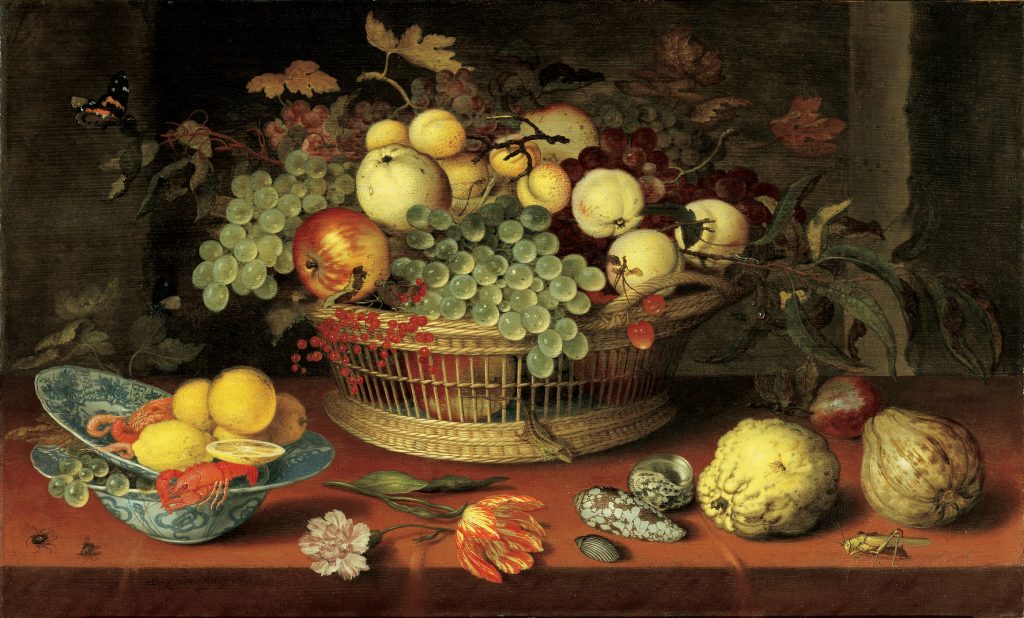Balthasar van der Ast (artist)
Balthasar van der Ast was a Dutch Golden Age painter. He is best known for...
ver artistaStudents will create still life drawings of everyday objects in their classroom in a small sketchbook they will keep for recording their observations.

Still Life with Basket of Fruit, by Balthasar van der Ast
Introduction / Warm-Up
Procedimiento de la actividad de enfoque
Cerrar
Written by Andrea Saenz Williams and Angela Lombardi
Vocabulario
still life
object
sketch
magnify
observe
Materiales
magnifying glass/hand lens to share as group; magnifying glass/ hand lens per student
9×12 drawing paper sketchbooks with watercolor paper covers
non-toxic watercolor pencils
paintbrushes
cups for water
still life props (small objects to draw such as plastic food, legos, or anything simple, but interesting)
paper towels
Actividades de extensión para profesores
Libros sugeridos para la biblioteca del aula
Ehlert, Lois. Planting a Rainbow. Harcourt, 1988. [ISBN 978-0-15-262609-9]
Mayer, Cassie. Markets. Heinemann Library, 2007. [ISBN 978-1-40349-404-7]
McMillan, Bruce. Growing Colors. HarperCollins, 1994, 1988. [ISBN 978-0-7587-2664-3]
Balthasar van der Ast was a Dutch Golden Age painter. He is best known for...
ver artista